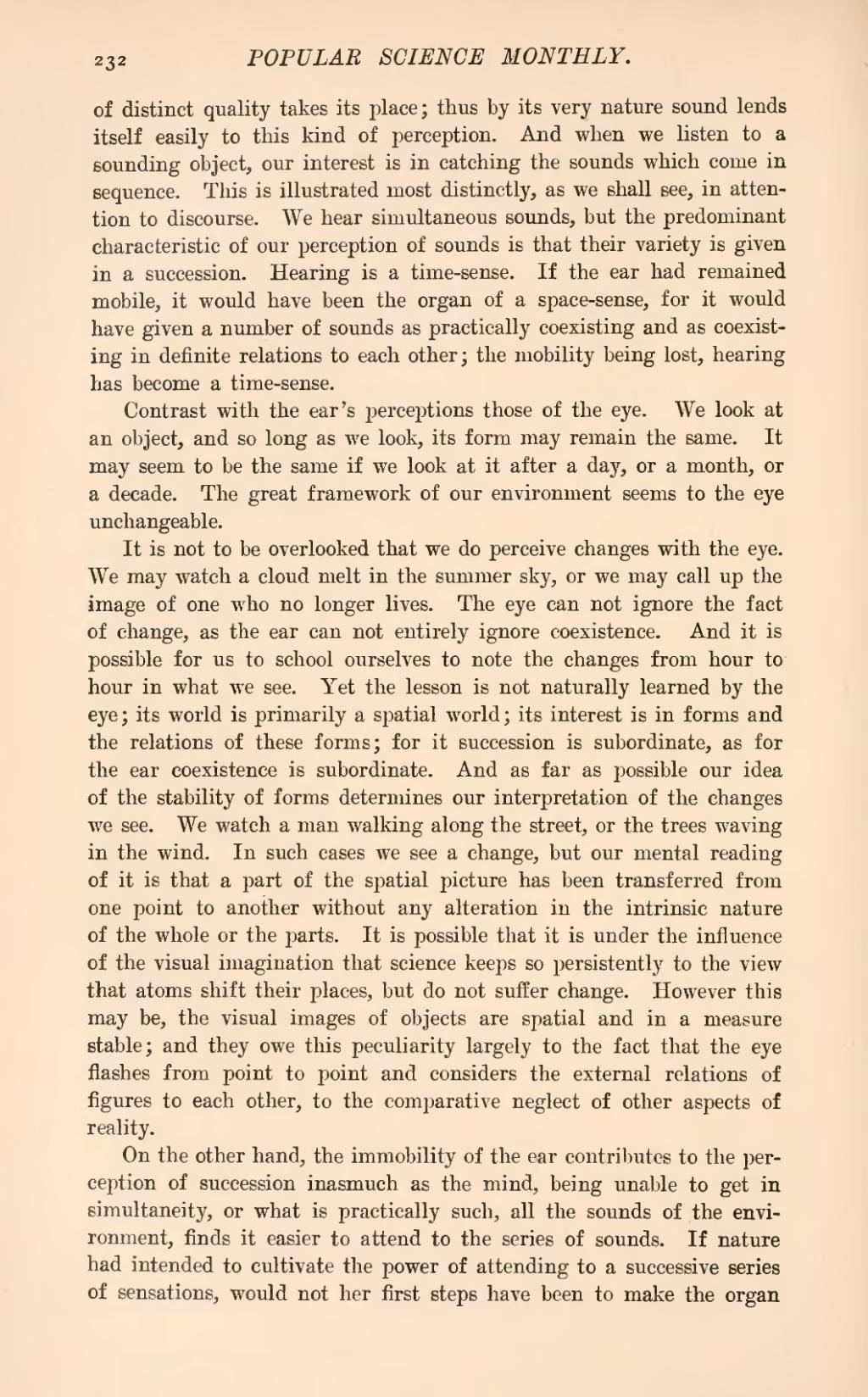of distinct quality takes its place; thus by its very nature sound lends itself easily to this kind of perception. And when we listen to a sounding object, our interest is in catching the sounds which come in sequence. This is illustrated most distinctly, as we shall see, in attention to discourse. We hear simultaneous sounds, but the predominant characteristic of our perception of sounds is that their variety is given in a succession. Hearing is a time-sense. If the ear had remained mobile, it would have been the organ of a space-sense, for it would have given a number of sounds as practically coexisting and as coexisting in definite relations to each other; the mobility being lost, hearing has become a time-sense.
Contrast with the ear's perceptions those of the eye. We look at an object, and so long as we look, its form may remain the same. It may seem to be the same if we look at it after a day, or a month, or a decade. The great framework of our environment seems to the eye unchangeable.
It is not to be overlooked that we do perceive changes with the eye. We may watch a cloud melt in the summer sky, or we may call up the image of one who no longer lives. The eye can not ignore the fact of change, as the ear can not entirely ignore coexistence. And it is possible for us to school ourselves to note the changes from hour to hour in what we see. Yet the lesson is not naturally learned by the eye; its world is primarily a spatial world; its interest is in forms and the relations of these forms; for it succession is subordinate, as for the ear coexistence is subordinate. And as far as possible our idea of the stability of forms determines our interpretation of the changes we see. We watch a man walking along the street, or the trees waving in the wind. In such cases we see a change, but our mental reading of it is that a part of the spatial picture has been transferred from one point to another without any alteration in the intrinsic nature of the whole or the parts. It is possible that it is under the influence of the visual imagination that science keeps so persistently to the view that atoms shift their places, but do not suffer change. However this may be, the visual images of objects are spatial and in a measure stable; and they owe this peculiarity largely to the fact that the eye flashes from point to point and considers the external relations of figures to each other, to the comparative neglect of other aspects of reality.
On the other hand, the immobility of the ear contributes to the perception of succession inasmuch as the mind, being unable to get in simultaneity, or what is practically such, all the sounds of the environment, finds it easier to attend to the series of sounds. If nature had intended to cultivate the power of attending to a successive series of sensations, would not her first steps have been to make the organ
